mrhappyrotter
Grand Chupacabra
Dendrobium normanbyense x Dendrobium aberrans
I've posted photos of this before, and I'm posting again. It's one of the only Dendrobiums that truly seems to do well for me. It likes moist growing conditions and does not appreciate drying out. Currently this is growing in a plastic pot that's set down into a clay pot, with a saucer underneath. The saucer collects water, and the clay pot wicks it up. The plastic pot does not sit in water, though. The inner and outer walls of the clay pot are covered in moss. On the inside, the plant has grown a significant portion of its roots into that mossy mat. In this photo, you can see that I set that whole pot-in-a-pot on top of another clay pot. This was to lift the plant up so I could get a better view of the flowers.
The flowers are very long lasting. This is now in full bloom, however, the flowers actually started opening up in January. And based on past experience, the plant will continue to have flowers on it into May or June. Also, it tends to produce a second, smaller flush of flowers later in the year.
This is fragrant, and fairly strongly so. The scent is peppery and sweet. I usually describe the sweet component as being similar to a smell that I associate with birds nests in which the eggs have recently hatched. But, I don't think that's a scent that most people are familiar with. So, "sweet" it is.
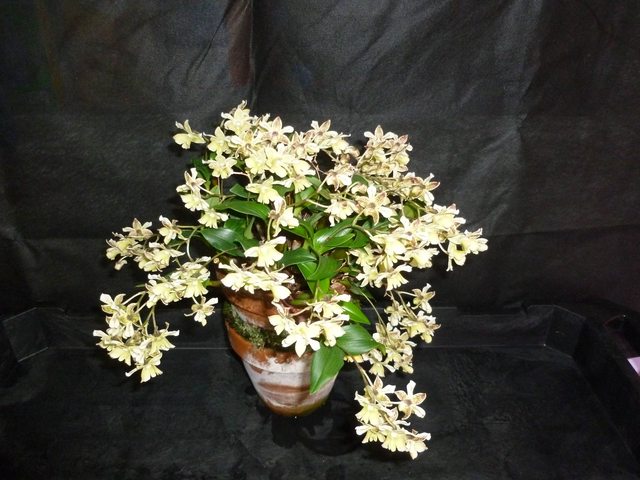
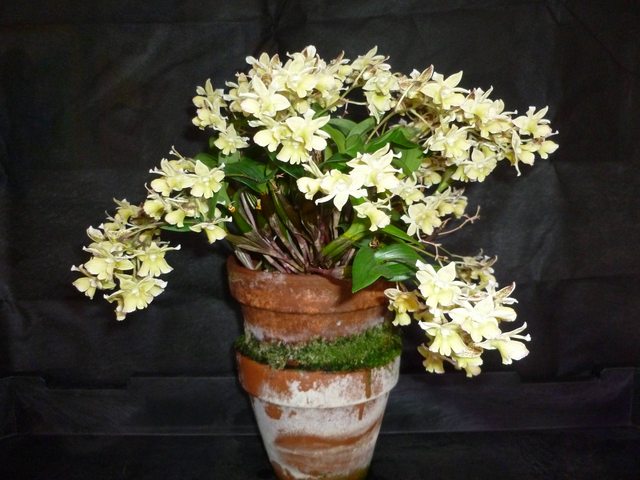
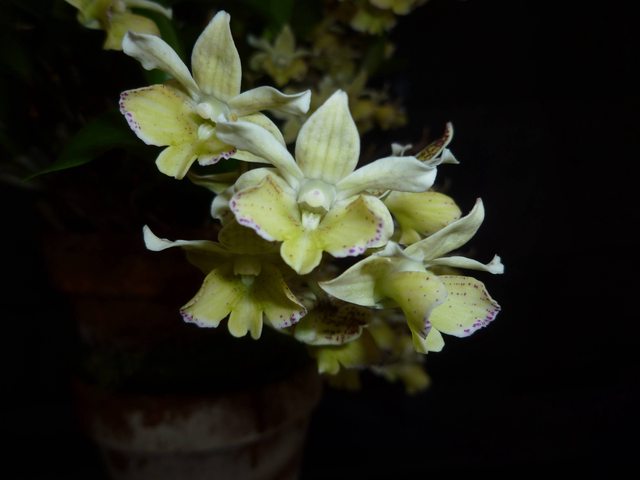
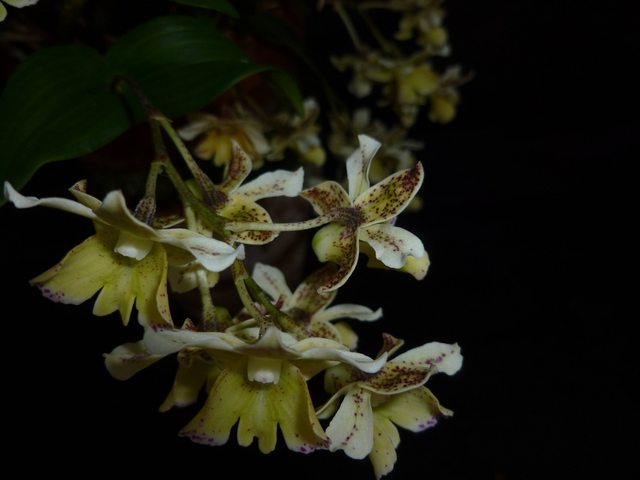
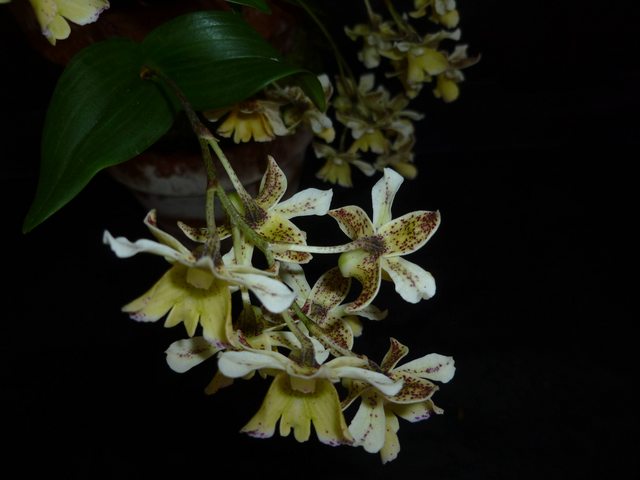
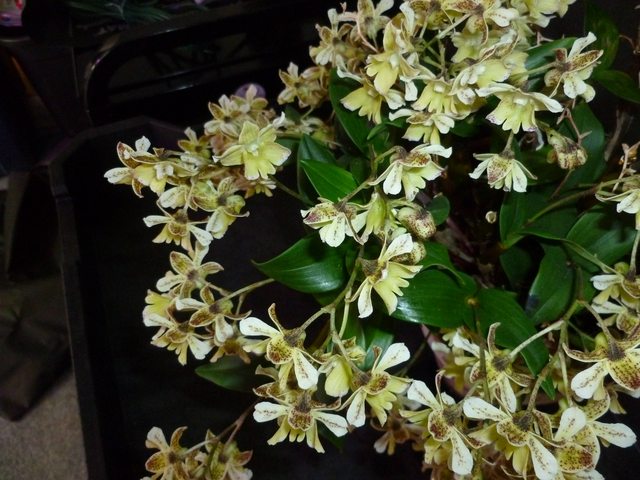
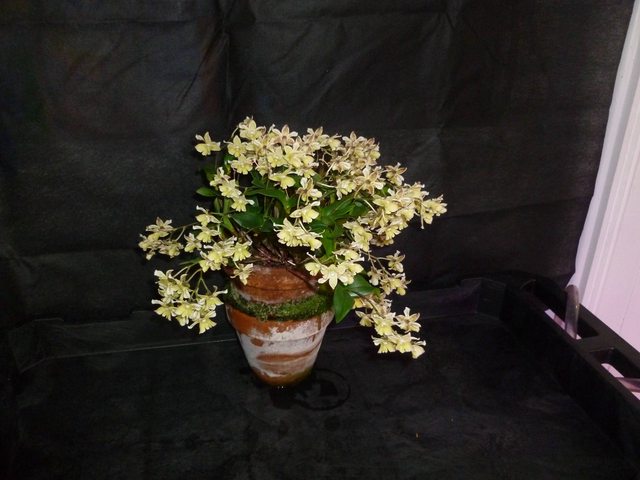
Album
I've posted photos of this before, and I'm posting again. It's one of the only Dendrobiums that truly seems to do well for me. It likes moist growing conditions and does not appreciate drying out. Currently this is growing in a plastic pot that's set down into a clay pot, with a saucer underneath. The saucer collects water, and the clay pot wicks it up. The plastic pot does not sit in water, though. The inner and outer walls of the clay pot are covered in moss. On the inside, the plant has grown a significant portion of its roots into that mossy mat. In this photo, you can see that I set that whole pot-in-a-pot on top of another clay pot. This was to lift the plant up so I could get a better view of the flowers.
The flowers are very long lasting. This is now in full bloom, however, the flowers actually started opening up in January. And based on past experience, the plant will continue to have flowers on it into May or June. Also, it tends to produce a second, smaller flush of flowers later in the year.
This is fragrant, and fairly strongly so. The scent is peppery and sweet. I usually describe the sweet component as being similar to a smell that I associate with birds nests in which the eggs have recently hatched. But, I don't think that's a scent that most people are familiar with. So, "sweet" it is.







Album



